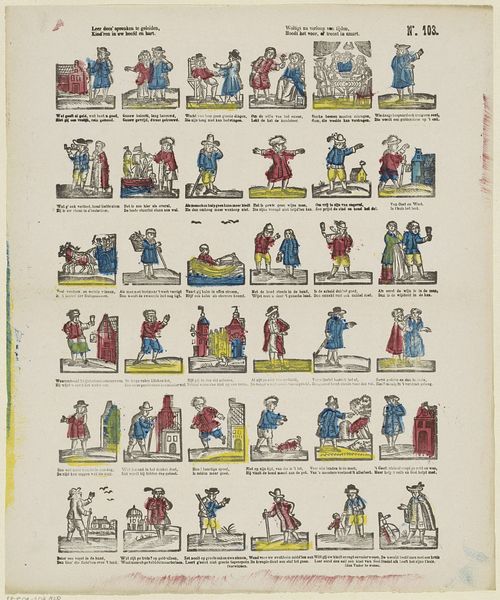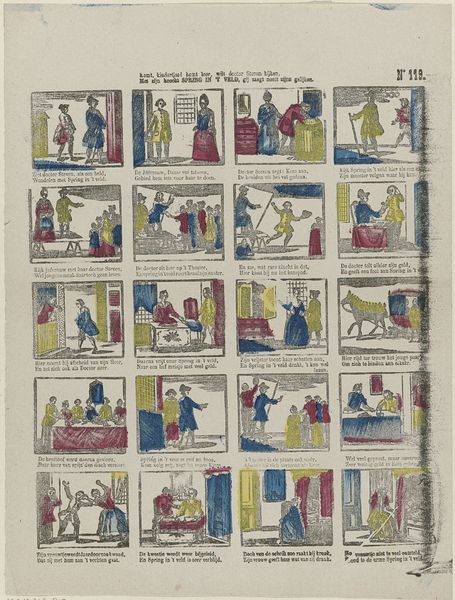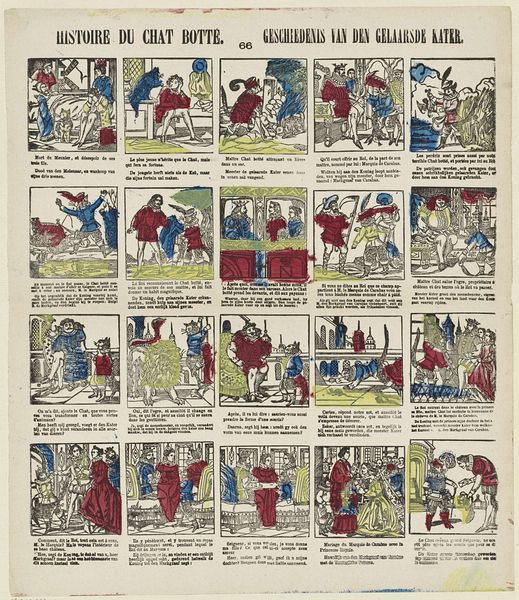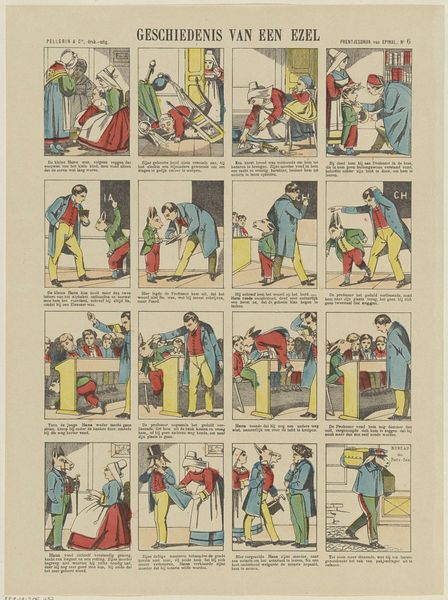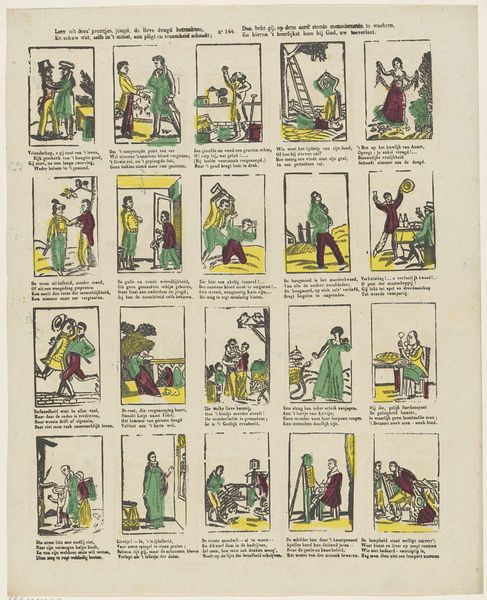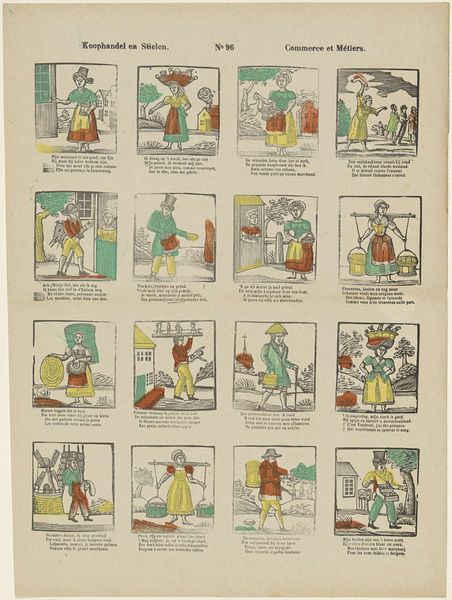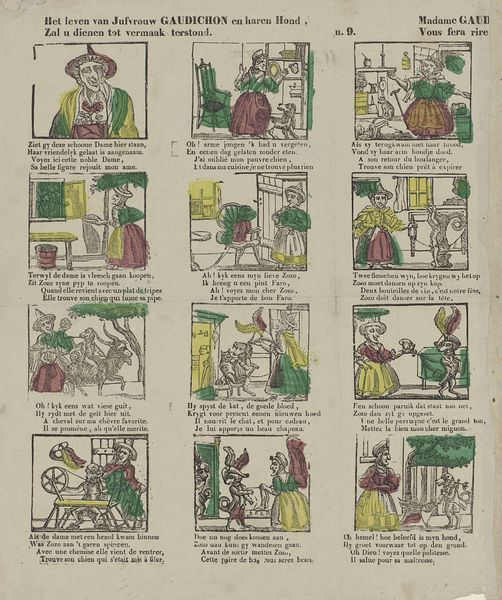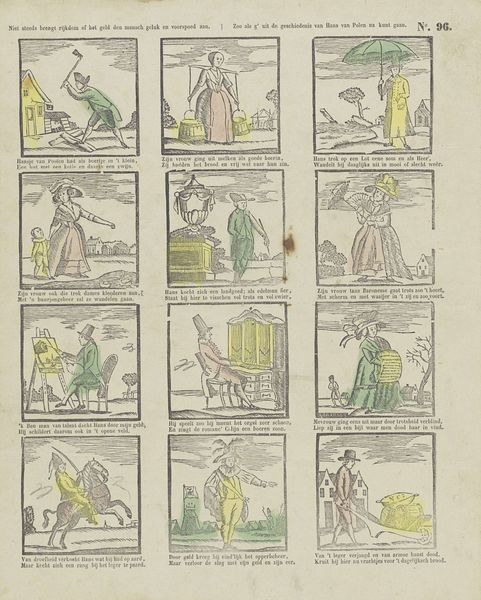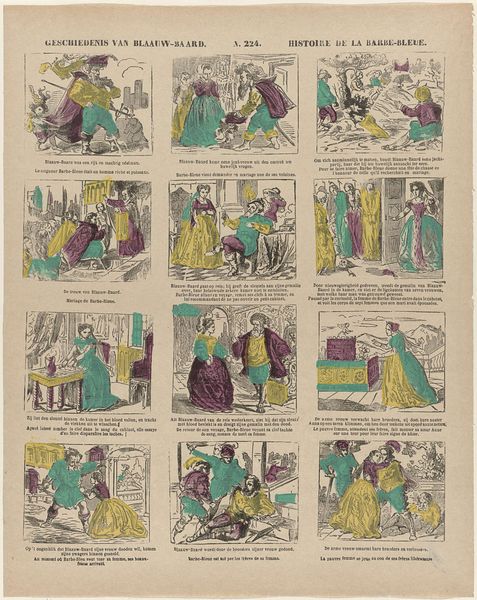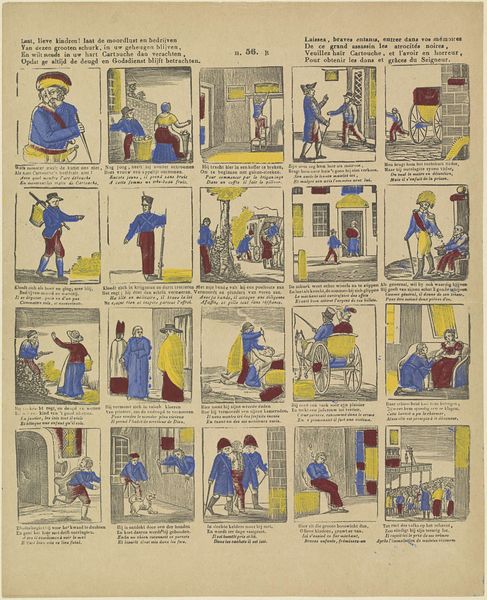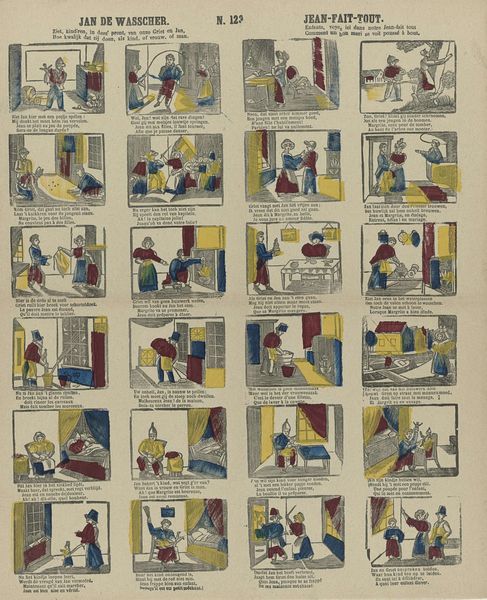
Landbeschrijfkundig nieuwjaar, of zeden en gewoonten van de voornaamste volken der wereld / Etrennes géographiques, ou moeurs et costumes des principaux peuples de la terre 1800 - 1833
0:00
0:00
print, etching, paper, engraving
#
comic strip
# print
#
etching
#
paper
#
flat colour
#
romanticism
#
orientalism
#
genre-painting
#
history-painting
#
engraving
Dimensions: height 381 mm, width 300 mm
Copyright: Rijks Museum: Open Domain
Philippus Jacobus Brepols created this hand-colored engraving offering a glimpse into the customs of different peoples. Note the repeated motif: paired figures, often holding hands, presenting an image of unity and connection. This gesture of holding hands, seemingly simple, carries layers of meaning that resonate through time. Consider its appearance in ancient Roman sarcophagi, where it symbolizes marital concord, or in medieval Christian art, where it signifies spiritual union. Across cultures, this gesture speaks to human connection. The standardization of this motif, as seen in Brepols's engraving, also evokes a sense of control and organization of the world, fitting within the Enlightenment's desire to classify and understand diverse cultures through a singular, unifying lens. Yet, the act of holding hands surpasses mere representation; it taps into our collective memory, conjuring feelings of empathy and shared humanity. This primal connection, this reaching out, echoes through history, continually resurfacing as a powerful force.
Comments
No comments
Be the first to comment and join the conversation on the ultimate creative platform.
